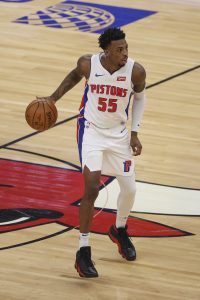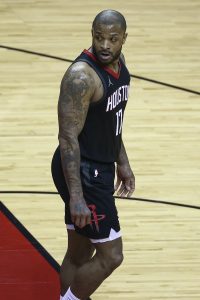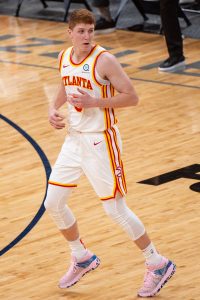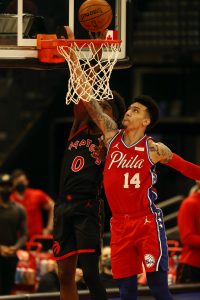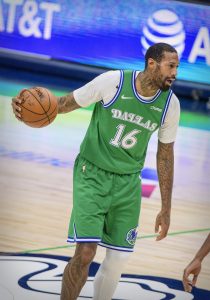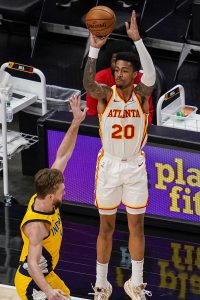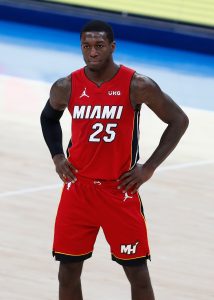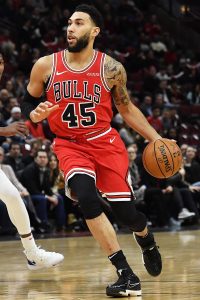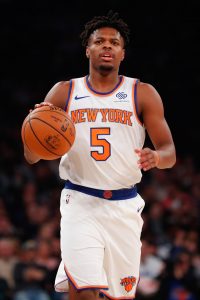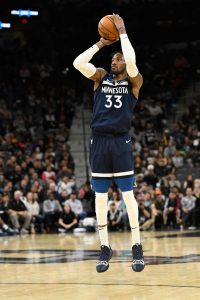With the March 25 trade deadline fast approaching, Hoops Rumors is taking a closer look at players around the NBA who are candidates to be moved this month, breaking them down into several categories based on their age, contracts, on-court value, and other categories. Today, we’ll zero in on the non-player assets that could be important at the deadline.
In our first four round-ups of this year’s potential trade candidates, we’ve listed a total of 88 different players. Before we move onto the top tier of potential trade targets on Friday, we’re going in a bit of a new direction today, identifying the non-player assets that could be crucial when it comes to completing deadline deals.
These are draft picks, cap exceptions, and other assets that will help grease the wheels of potential deals when player-to-player swaps don’t produce equal value or don’t work based on NBA rules.
Let’s dive in…
Draft picks:
Many of the teams that hold extra first-round picks in upcoming drafts – including the Thunder, Rockets, Pelicans, and Knicks – probably aren’t in position to start packaging those picks to acquire impact players, so their effect on the deadline will be limited.
However, the teams whose first-rounders those clubs control will feel the impact of those past deals. The Bucks, Clippers, Lakers, and Mavericks are among the teams that are significantly restricted in their ability to offer up draft capital in deadline deals, since they’ve already surrendered multiple picks in other trades.
The Timberwolves’ 2021 first-round pick (top-three protected) controlled by the Warriors would be an asset to monitor closely if Golden State were a buyer. But that seems increasingly unlikely, given the Warriors’ modest 21-20 record and the fact that Klay Thompson won’t be back until next season. The team is probably better off hanging onto that pick for now.
The Nets are also worth watching — despite trading away their own second-round pick, they could have up to three other second-rounders, via Atlanta, Phoenix, and Indiana (the Pacers’ second-rounder is 45-60 protected, so if they miss the playoffs, they’ll have to send it to Brooklyn). The Nets are a veteran team that doesn’t need to draft a bunch of rookies this summer (they’ll have a first-round pick anyway), so all of those second-rounders could be up for grabs in trades.
Traded player exceptions:
The Celtics‘ massive traded player exception worth $28.5MM has received most of the attention in recent months, and for good reason — it’s technically big enough to fit all but 34 NBA players, though Boston would have to send out some money to avoid surpassing the hard cap in certain scenarios.
There are plenty of other trade exceptions available around the league though, include a Thunder TPE that’s nearly as big as Boston’s ($27.5MM).
The Rockets ($10.7MM), Nuggets ($9.5MM), Sixers ($8.2MM), Heat ($7.5MM), Jazz ($5MM) are among the other clubs with sizeable TPEs that could come in handy in the next week.
As a reminder, a trade exception allows a team to take back a player earning any amount up to the value of the TPE (plus $100K) without sending out any salary in return. A more in-depth explanation can be found in our glossary entry.
Disabled player exceptions:
Disabled player exceptions, which can be awarded to teams when a player suffers a season-ending injury, are somewhat similar to trade exceptions. They’re more versatile in some ways (they can also be used to sign a free agent or claim a player on waivers), but more restrictive in others (any player acquired, signed, or claimed must not be under contract beyond this season).
In 2020/21, five teams were awarded disabled player exceptions, but the Heat forfeited theirs by trading away their injured player (Meyers Leonard). That leaves the Warriors ($9.3MM), Magic ($6.1MM and $3.7MM), Nets ($5.7MM), and Wizards ($4.2MM) as the teams with at least one DPE available.
All four of those teams, unfortunately, are either already in luxury tax territory or are very close to it, so the odds of them taking on extra salary via their disabled player exceptions aren’t great.
Still, there are creative ways to use these exceptions without actually increasing team salary. For instance, let’s say the Wizards trade Ish Smith for a player earning $4MM on an expiring contract. The Wizards could fit the incoming salary into their DPE and create a new trade exception worth $6MM (Smith’s salary) that would be available to use for a year.
Disabled player exceptions will expire if they’re not used by April 19 — obviously, after the March 25 trade deadline, they can only be used on free agents or waivers claims.
Cap room:
Only one team has any cap room that could come in handy at the trade deadline — the Knicks still have more than $15MM in space available. That would allow New York to trade for a player like J.J. Redick ($13MM) without sending out any salary.
If the Knicks wanted to acquire a player whose salary exceeds the available cap room, such as Victor Oladipo ($21MM), they wouldn’t have to match his full salary as long as they send out enough to remain below the cap after the deal is complete. In the case of Oladipo, New York would have to include about $6MM in outgoing salary.
While it sounds like the Knicks would like to upgrade this year’s roster, the club could also accommodate a salary dump with its cap room, taking on another team’s unwanted contract and acquiring another asset for its trouble.
Cash:
Teams are permitted to send or receive up to $5.6MM in trades during the 2020/21 season and most teams remain well below that limit, as our tracker shows. The Rockets are the lone team that’s tapped out and can’t send any more cash this season, while the Pistons – who acquired $4.6MM in an offseason deal – are the closest to their incoming limit.
Cash considerations can be either a deal sweetener or the entirety of a team’s return in a given trade, like today’s swap that sent Torrey Craig from Milwaukee to Phoenix for just cash.

